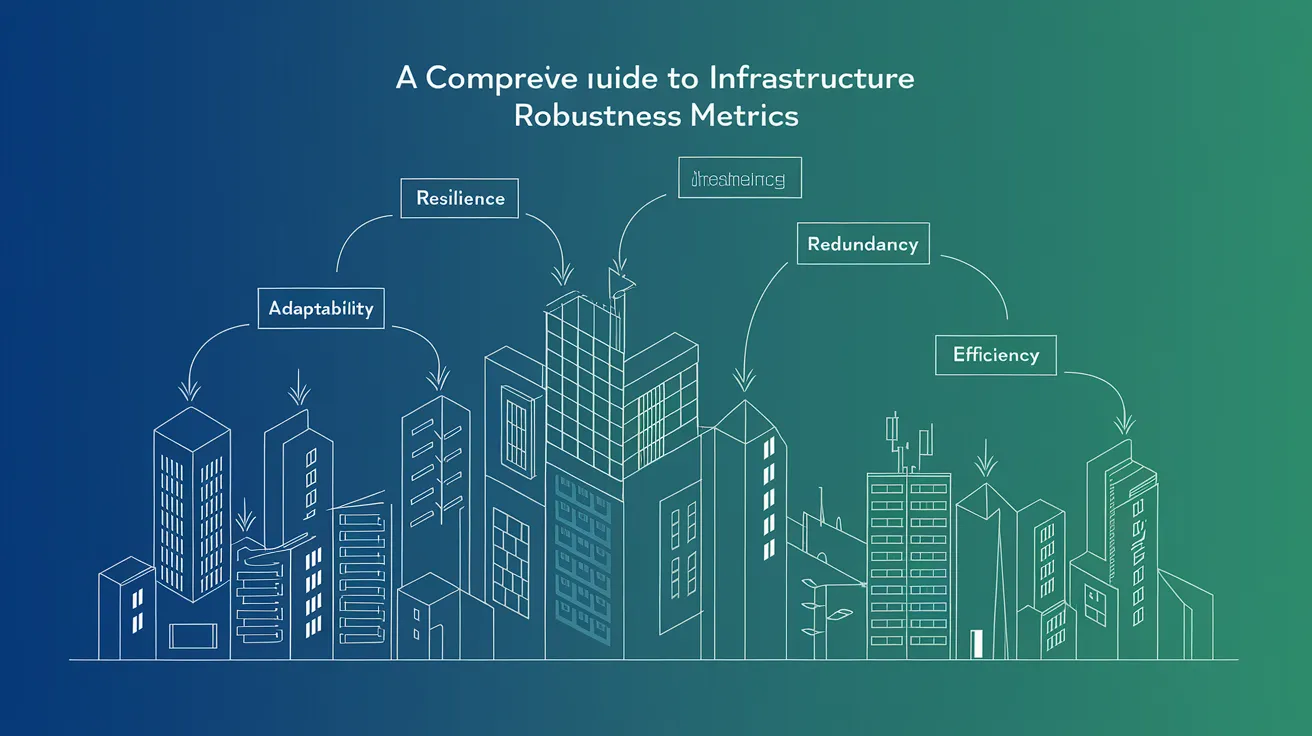
In the world of IT infrastructure and systems management, understanding and implementing robust metrics is crucial for ensuring system reliability, performance, and resilience. This article delves into key metrics used to analyze infrastructure robustness, providing detailed explanations, examples, and insights into their criticality.
1. RPO (Recovery Point Objective)
Definition: RPO defines the maximum acceptable amount of data loss measured in time after a critical event.
Example: If a system has an RPO of 1 hour, it means that in the event of a disaster, the system can lose up to 1 hour of data without severely impacting the business.
Criticality:
- Critical: For systems handling frequent, high-value transactions (e.g., stock trading platforms, e-commerce sites)
- Less Critical: For systems with infrequent updates or where data loss is less impactful (e.g., internal wikis, long-term archives)
2. RTO (Recovery Time Objective)
Definition: RTO is the maximum acceptable downtime after a failure or disaster event.
Example: An RTO of 4 hours means the system should be back online and operational within 4 hours of an outage.
Criticality:
- Critical: For systems requiring high availability (e.g., emergency services systems, core banking applications)
- Less Critical: For non-essential systems or those with predictable low-usage periods (e.g., internal HR systems, batch processing systems)
3. MTTR (Mean Time To Recover)
Definition: MTTR measures the average time it takes to repair a failed component or system and return it to operational status.
Example: If a system experiences 5 failures in a month with recovery times of 1, 2, 3, 2, and 2 hours respectively, the MTTR would be (1+2+3+2+2) / 5 = 2 hours.
Criticality:
- Critical: For systems where quick recovery is essential (e.g., production lines, critical infrastructure)
- Less Critical: For redundant systems or those with less impact on core operations
4. MTBF (Mean Time Between Failures)
Definition: MTBF is the predicted elapsed time between inherent failures of a system during normal operation.
Example: If a server fails 3 times in 3000 hours of operation, its MTBF would be 3000 / 3 = 1000 hours.
Criticality:
- Critical: For systems where failure can lead to significant financial loss or safety issues (e.g., aircraft systems, medical devices)
- Less Critical: For systems with high redundancy or where failure impact is minimal
5. Availability
Definition: Availability is the proportion of time a system is in a functioning condition, often expressed as a percentage.
Example: If a system is operational for 8,760 hours out of a year (8,766 hours), its availability would be (8,760 / 8,766) * 100 = 99.93%.
Criticality:
- Critical: For systems requiring constant uptime (e.g., telecommunications networks, cloud services)
- Less Critical: For non-essential services or those with acceptable downtime windows
6. Durability
Definition: Durability refers to the probability that data will be preserved over a long period without corruption or loss.
Example: Amazon S3's standard storage class offers 99.999999999% (11 9's) durability over a given year.
Criticality:
- Critical: For long-term data storage systems, especially those containing irreplaceable data (e.g., scientific research data, financial records)
- Less Critical: For temporary data storage or easily reproducible data
7. SLA (Service Level Agreement) Metrics
Definition: SLA metrics are specific performance and availability guarantees made by service providers to their customers.
Example: An SLA might guarantee 99.9% uptime, a maximum response time of 200ms for API calls, or a minimum throughput of 1000 transactions per second.
Criticality:
- Critical: For business-critical services, especially in B2B contexts where breaches can lead to penalties or lost business
- Less Critical: For internal services or where formal agreements are not in place
8. Load Testing Metrics
Definition: Load testing metrics measure how a system performs under various levels of simulated load.
Example: A load test might reveal that a web application can handle 10,000 concurrent users with an average response time of 1.5 seconds, but degrades significantly beyond that point.
Criticality:
- Critical: For systems expecting high or variable load (e.g., e-commerce sites during sales events, ticket booking systems)
- Less Critical: For systems with predictable, low-volume usage
9. Failover Time
Definition: Failover time is the time it takes for a system to switch to a backup or redundant system when the primary system fails.
Example: In a high-availability database cluster, failover time might be the duration between the primary node failing and a secondary node taking over, typically measured in seconds.
Criticality:
- Critical: For systems requiring near-zero downtime (e.g., financial trading systems, real-time monitoring systems)
- Less Critical: For systems where brief interruptions are acceptable
10. Data Integrity Measures
Definition: Data integrity measures ensure that data remains accurate, consistent, and unaltered throughout its lifecycle, including during and after recovery processes.
Example: Checksums, error-correcting codes, and blockchain-like ledgers are examples of data integrity measures.
Criticality:
- Critical: For systems where data accuracy is paramount (e.g., financial systems, medical records)
- Less Critical: For systems dealing with non-sensitive or easily verifiable data
Conclusion
Understanding and implementing these metrics is crucial for building robust, reliable, and resilient IT infrastructure. The criticality of each metric can vary depending on the specific use case, industry regulations, and business requirements. By carefully considering and applying these metrics, organizations can significantly enhance their ability to prevent, respond to, and recover from various types of system failures and disasters.
https://bit.ly/3AZgkMx
https://bit.ly/3XFCOLn
https://guptadeepak.com/content/images/2024/09/Infrastructure-deepak-gupta.webp
https://guptadeepak.weebly.com/deepak-gupta/comprehensive-guide-to-infrastructure-robustness-metrics


No comments:
Post a Comment